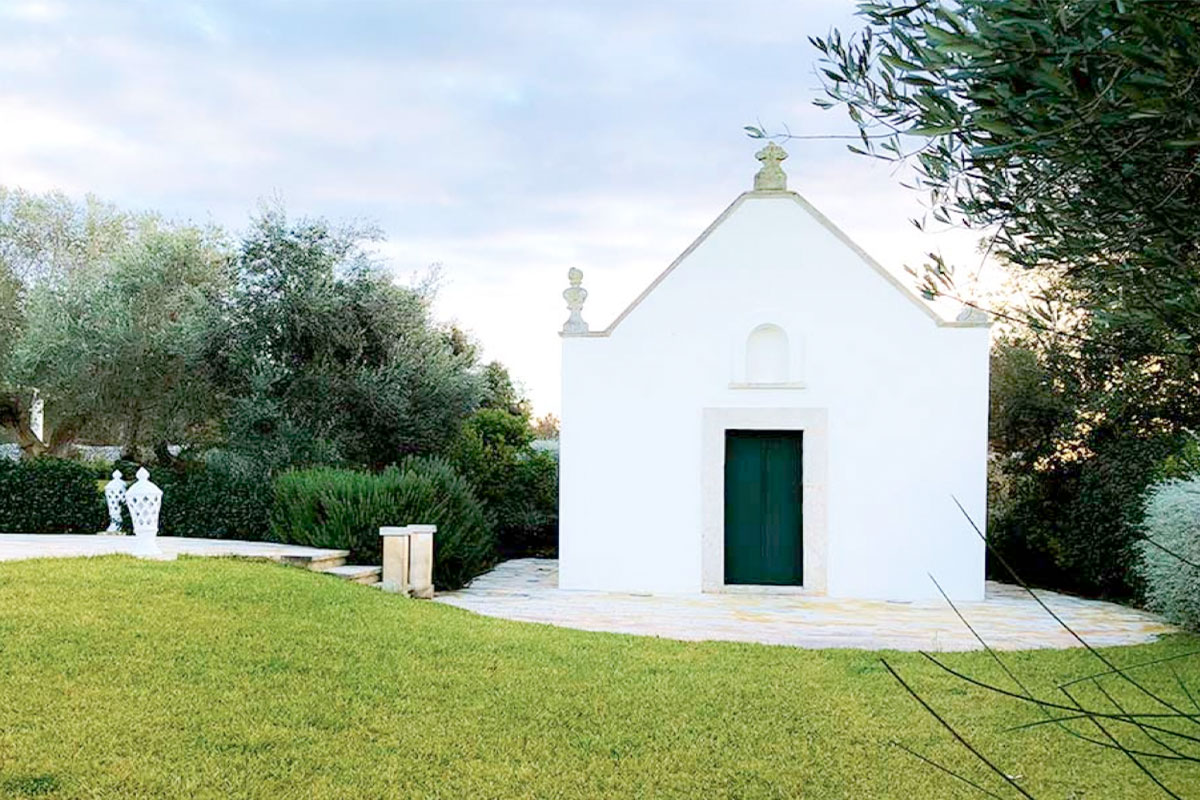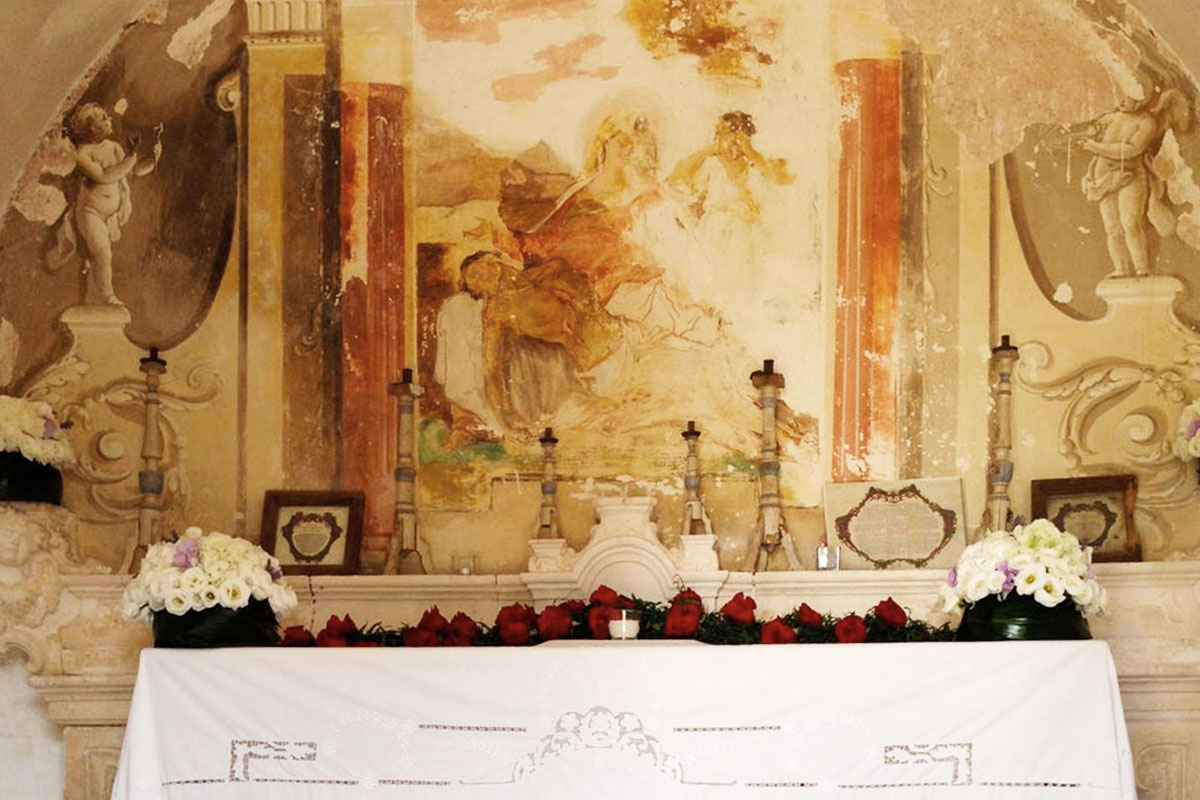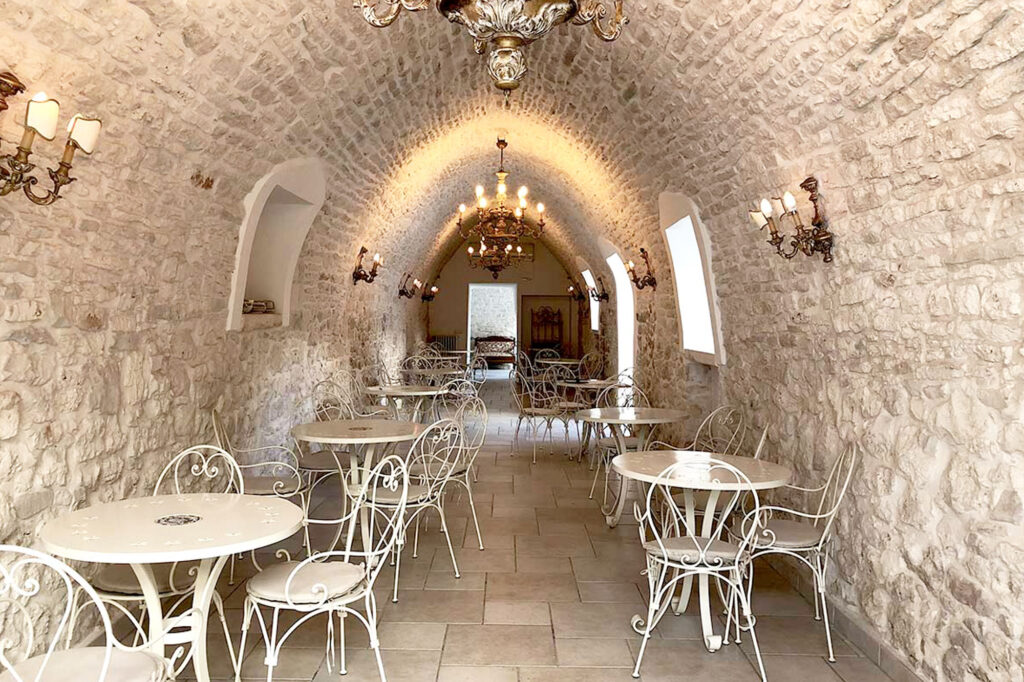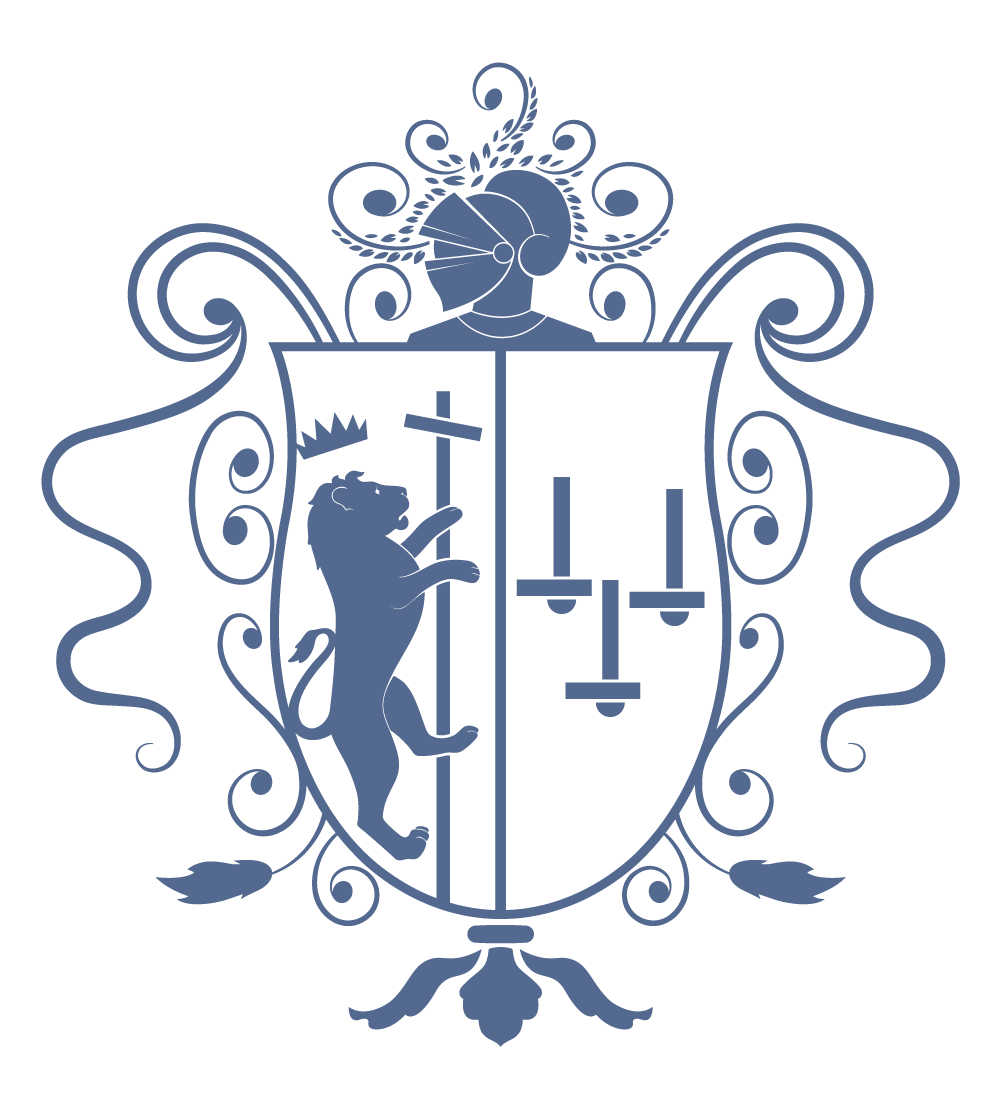Nestled among the gentle hills of the Valle d’Itria, just minutes from Martina Franca’s baroque splendor, lies a place where time breathes softly, where olives whisper in the wind and earth hums with life. Masseria Magli reveals itself here: sixteen hectares of living landscape, embraced by centuries-old olive trees and fragrant Mediterranean gardens that stir the soul.
Nature isn’t just a backdrop, it’s the main character. Ancient olive groves mingle with aromatic herbs, stone pathways wend through lovingly tended gardens, and every flower tells its own story—a season, a memory, a promise. The courtyard, manicured greens, and intimate chapel become the perfect natural stage for weddings that feel both dreamlike and real.
Choosing Masseria Magli for your special day means choosing more than a venue: it means entering a story woven from light, nature, tradition, and magic, a tale to be written together, among rustling leaves and unforgettable smiles.
Nature and Landscape: The Soul of Masseria Magli Between Beauty and Enchantment
Nestled among the gentle hills of the Valle d’Itria, just minutes from Martina Franca’s baroque splendor, lies a place where time breathes softly, where olives whisper in the wind and earth hums with life. Masseria Magli reveals itself here: sixteen hectares of living landscape, embraced by centuries-old olive trees and fragrant Mediterranean gardens that stir the soul.
Nature isn’t just a backdrop, it’s the main character. Ancient olive groves mingle with aromatic herbs, stone pathways wend through lovingly tended gardens, and every flower tells its own story—a season, a memory, a promise. The courtyard, manicured greens, and intimate chapel become the perfect natural stage for weddings that feel both dreamlike and real.
Choosing Masseria Magli for your special day means choosing more than a venue: it means entering a story woven from light, nature, tradition, and magic, a tale to be written together, among rustling leaves and unforgettable smiles.
Constructed in the early 1700s, Masseria Magli’s history is woven into a time when the land was more than a livelihood, it was a calling and a spiritual refuge. Named after Abbot Magli, esteemed ancestor of today’s Aquaro family, the estate honors his legacy as a philosopher and theologian whose spirit still resonates among its walls.
At the heart of the estate lies a modest, serene chapel holding a local stone altar. Above it is a poignant fresco of the Deposition of Christ, likely the work of Domenico Carella, renowned for his art in Martina Franca’s Ducal Palace, or one of his devoted pupils, an artwork that speaks of shared faith, art, and divine beauty.


Not long ago, Masseria Magli was a vibrant microcosm, where farmland labor, seasonal rhythms, and communal breath intertwined. The Massai (farmers), guardians of age-old customs, lived in the estate’s central structure, while the landlord’s wing came alive in summer with the family’s presence.
Long before hospitality became a modern ideal, the Masseria opened its gates to shepherds and pilgrims along the transhumance routes, offering shelter, water, and shade beneath Puglia’s generous skies. Among the fields, scattered trulli await restoration, each testifying to the site’s deep sense of belonging and authentic welcome.
The heart of this timeless beauty is the ancient “aia” (courtyard) – 250 sqm once used for threshing grain. Now transformed into a majestic terrace overlooking infinity, it offers breathtaking views and unforgettable sunsets that set the Puglian sky ablaze, as the hush of the countryside fills the evening.


At Masseria Magli, every stone holds a story and every sunset seals a promise: a hospitality that never dates, born from authenticity and true beauty.

Completing this bridge between past and present is the proud family crest from the 18th century: a lion rampart, emblematic of courage, nobility, pride, flanked by three swords, signifying valor, determination, and enduring roots. It’s more than heraldry, it’s a message carried through generations, echoing the gentle power of tradition.